Snowboarders, as a class of people, are notorious for being rebels. They party hard, break multiple bones, roll perfect joints in 10-15 seconds, wear strange patchworks of tattered clothes, prefer energy drinks over water (according to their sponsors), prank each other incessantly, are partial to toilet humor, don’t mind shitting outdoors in sub degree temperatures, and throw their battered bodies off of abandoned buildings to land on a rail and capture a SIIIIIIICK. Where did this lifestyle originate and where is it going? Are snowboarders entitled, goofy, self-centered idiots or epic, artistic, purpose-driven heroes? And before we get to Marco Siffredi (the first man to snowboard continuously down Mount Everest) and his place in this powdery microcosm of awwweessomee brooo, who was the first person who stood on the summit of a snowy mountain, icy wind lashing through dirty dreads, and spake: “I will tie my feet to this wooden plank…and shred this gnar”?
It all began with Sherman Poppen. He was a surfer/engineer who in 1964 bolted two kids skiis together as a Christmas gift for his daughter. Then, in 1965, a bowling ball manufacturer took this idea and manufactured the snurfer:
It cost $15 and 1 million snurfers were sold in the next decade. But this was just a silly toy.
Meanwhile, in glorious upstate New York, Dimitrije Milovich was sliding around on cafeteria trays in the snow. What a beast. He began to develop snowboards following the example of the new short surf boards. He experimented with laminating glass and gravel on the board and also used nylon straps. In 1975, he created a company called “Winterstick” which is considered the first snowboard company:
They were mentioned by Playboy and Newsweek in 1976, and by 1980 they were broke.
Meanwhile, Jake Burton Carpenter, a 23 year old student in 1977, was obsessed with the Snurfer. He was snurfing all day and snurfing all night. He kept on improving the toy: foot straps for better control, fins for more stability. He started his own company in 1977. It still exists today:
Throughout this birthing decade, snurfers and such were not allowed on ski resorts. (Those pompous, tight-ass skiers probably had a sense that their arch-enemies were rising from the rad depths of gnarly hell.) The first snowboarders would go to resorts at night, walk up the trails, and ride down secretly in order to avoid a penalty. Even back then, snowboarders were rebels.
And while all this was going on, a little boy was born in a manger on May 22, 1979 in Chamonix, France. Chamonix is the extreme mountain sports capital of the world. The town was the host of first Winter Olympics in 1924 and is located in a valley 3,810 meters below the highest summit in Western Europe: Mount Blanc. The snowboarding messiah was the fourth child of a climbing family. His father was a mountain guide and his older brother would die in an avalanche. The “boy who liked to live” was named was Marco Siffredi:
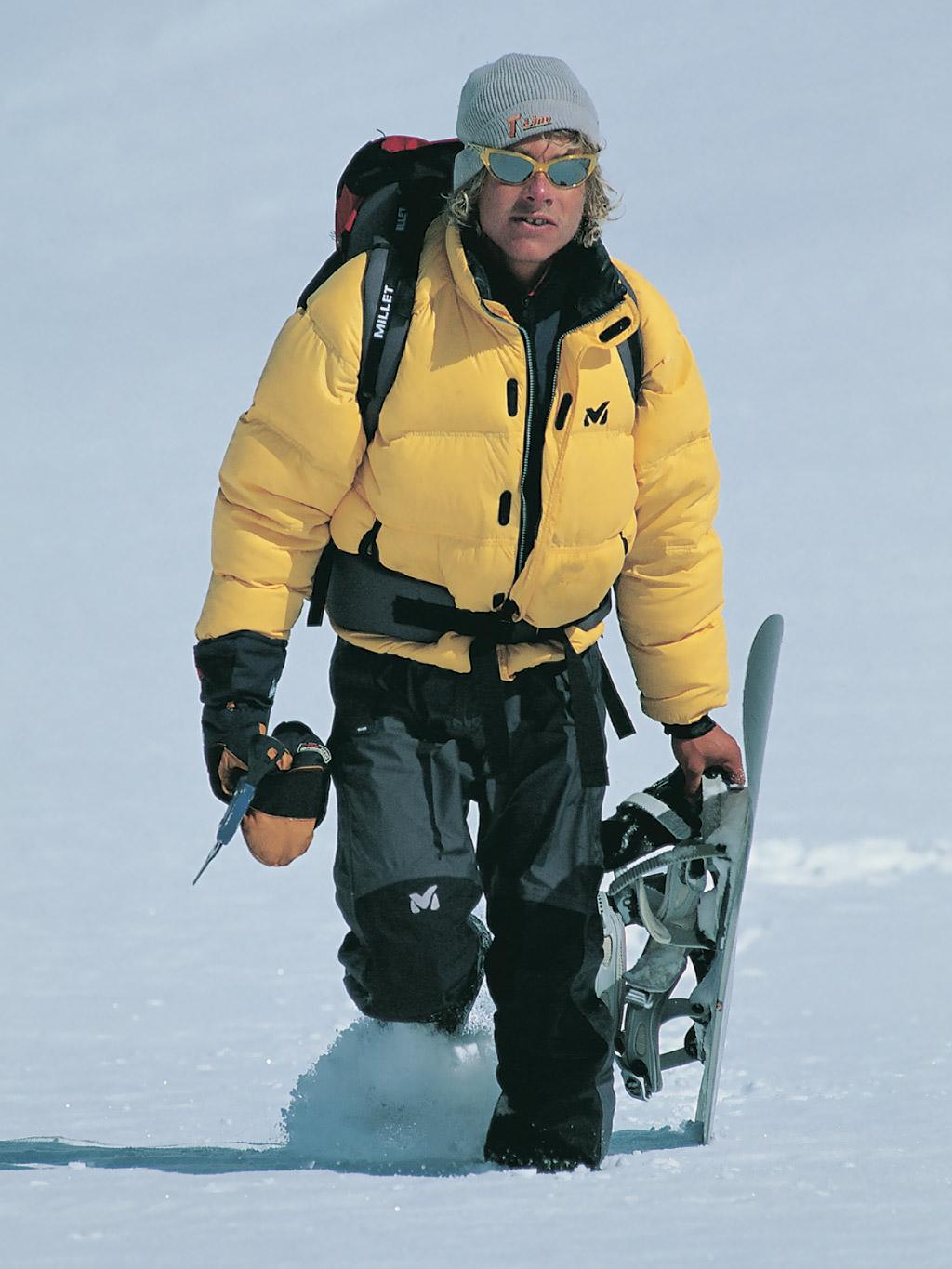
Fast forward through unruly childhood (in which he cut up his teeth multiple times which gave him his gap toothed smile):
In 1996, only a year after learning how to snowboard, Marco accomplished one of the valley’s “test pieces”: the Mallory on the North Face of the Aiguille du Midi, a 1,000 meter exposed rock garden with passages close to 55 degrees:
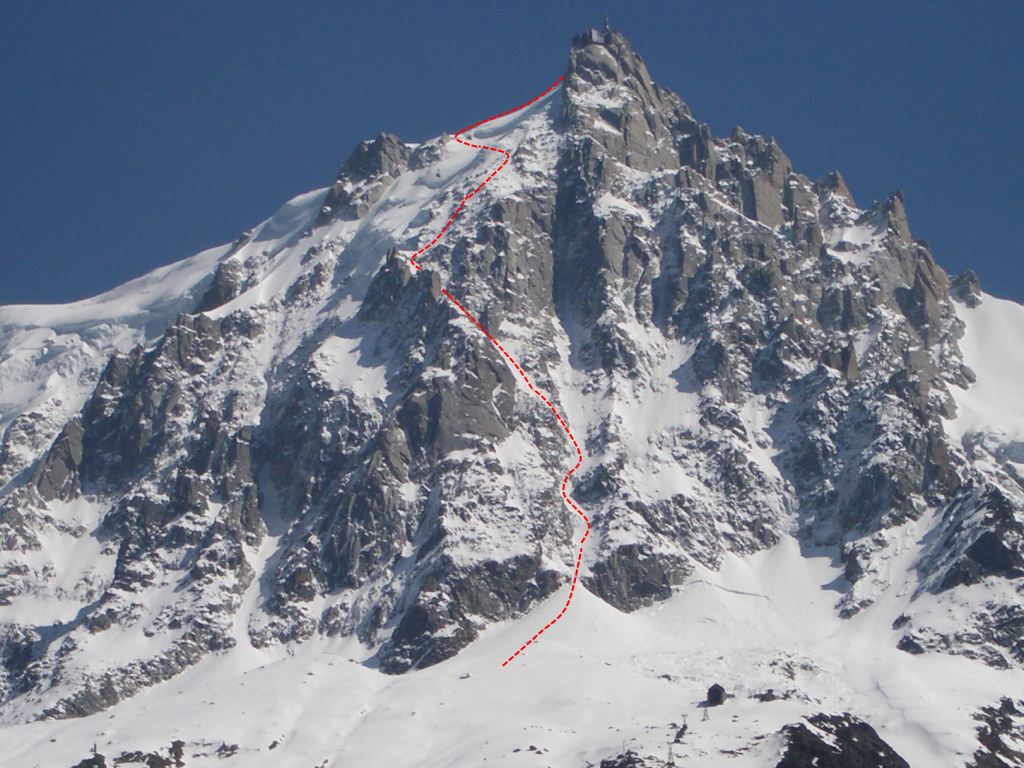
To end that season, Marco became the first snowboarder to descend Chardonnet (sustained 55 degrees) with his best friend, Philippe Forte. Phillipe would die the next year in an avalanche on Chamonix’s Grands Montets ski area.
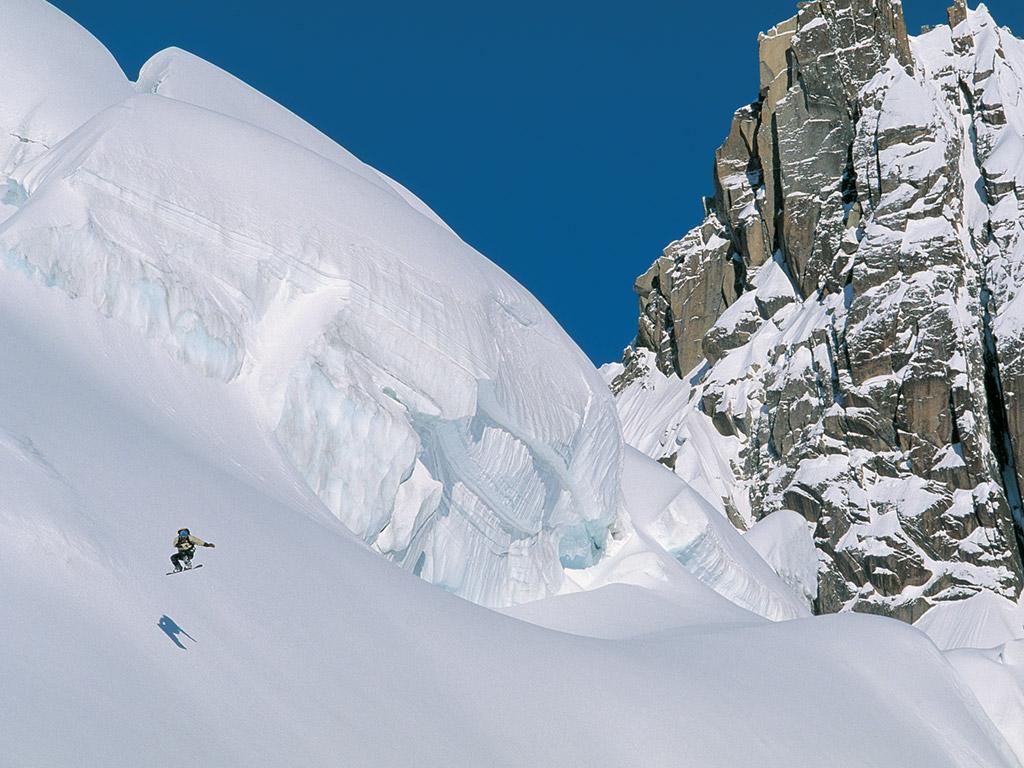
But what put Marco on the map was in 1999, at the age of 20, when after snowboarding for only 4 years he rode the Nant Blanc on the Aiggille. This mountain face had been skied only once before (1989) and is a 3,300 meter descent which averages 55 degrees in steepness, with sections of 60 and 65 degrees. To put these angles in perspective, Chamonix writer Trey Cook wrote: “…a blown edge, a miscalculated turn, or a momentary lapse of concentration and the rider might as well have jumped from an airplane without a parachute.” Here is Marco on the mountain:
That fall, Marco went to Nepal and descended Dorje Lhakpa, a 22,854 foot peak in the Himalaya. On his return from Dorje Lhakpa, Marco contacted Russell Brice of Himalayan Expeditions, a commercial guiding operation specializing in fully-equipped expeditions to 8,000 meter peaks. Brice advised the blossoming daredevil to attempt other 8,000 peaks (8/14 are in Nepal) before trying Everest. Why? To see if Marco’s body could even adapt to the extreme altitude. They made plans for the Himalayan giant: Cho Oyu:
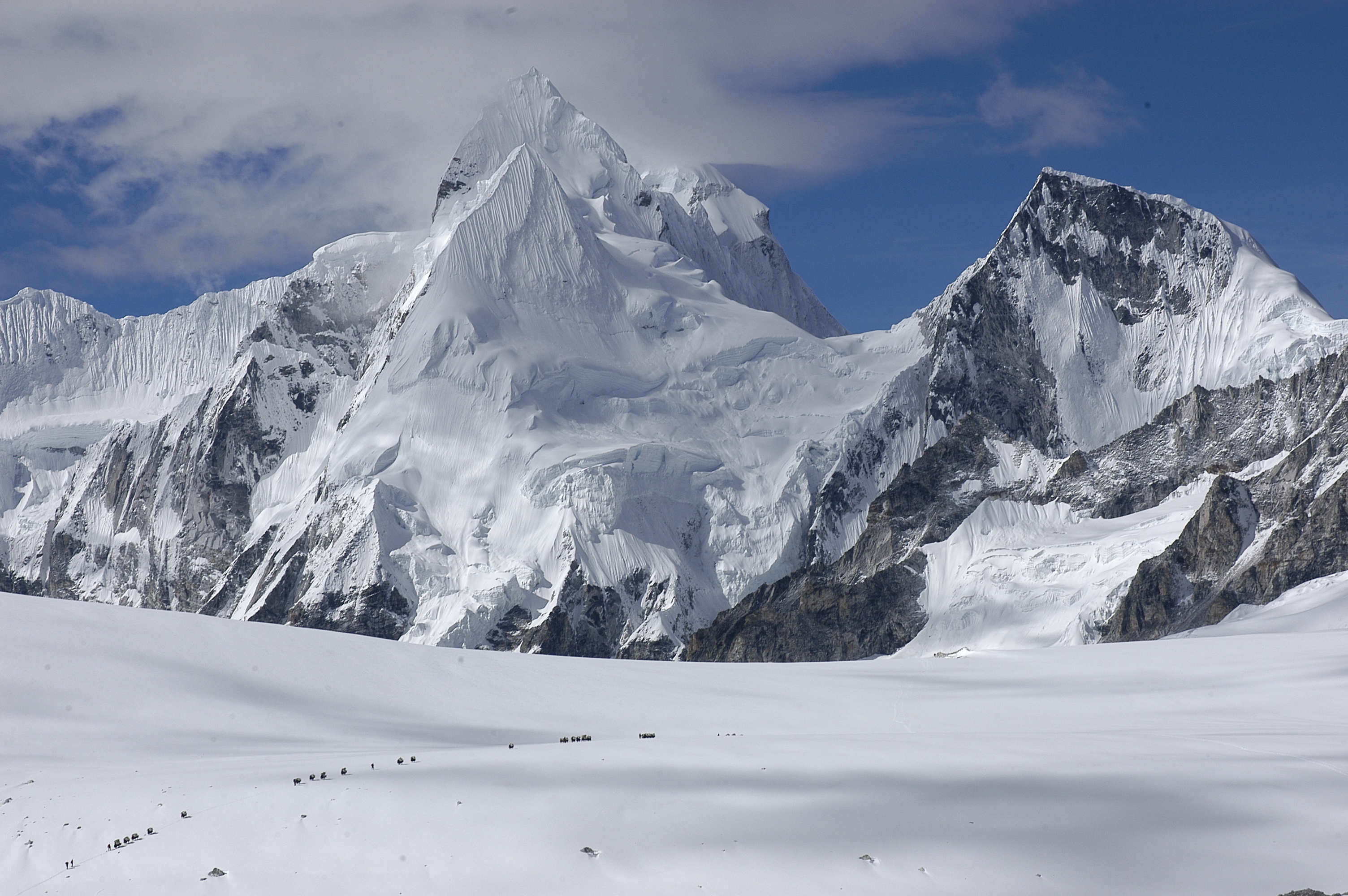
The next year Marco descended Cho Oyu, the world’s six-highest peak, a big step towards his ultimate goal, the Holy Grail of descents: Mt. Everest. Yes, he was ready. Older snowboarders attempted to dissuade Marco against attempting Everest at such a tender age. Marco’s reply: “If we don’t do stuff that is a bit crazy at 20, we’re not going to start at 50, yours is the philosophy of an old fart.”
*
In spring of 2001, Marco journeyed with Himalayan Expeditions for Everest. Marco’s hope was to summit and descend by the Horbein Couloir, the most direct of the 15 established routes:
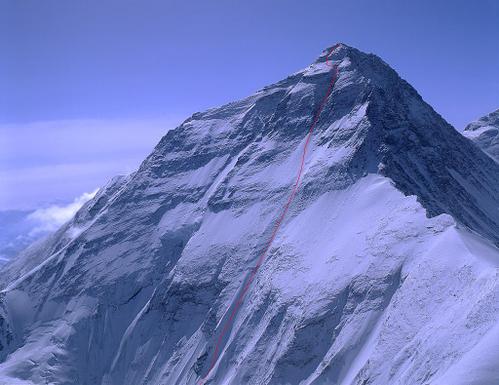
But when they arrived there was hardly any snow on the summit. Most people (99%) attempt to climb Everest in the spring because of the lack of snow and lighter conditions. But these lighter, more “climbing favorable” conditions are not conducive to shredding. Marco had to go with plan B, shredding the Norton Couloir. Here he is, on his 22nd birthday, the day before he summited Everest for the first time:
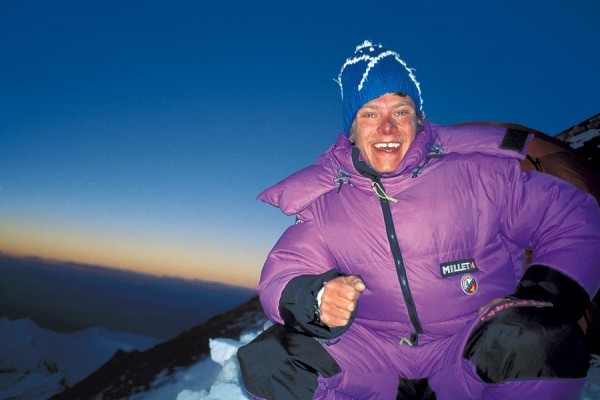
Soon after leaving the summit, Marco’s binding broke due to the extreme high-altitude cold. One of the sherpas was able to fix it with bailing wire, and Marco entered the Norton Couloir, shredding 1,800 meters of slopes of 40-45 degrees. He arrived at base camp less than 4 hours after leaving the summit. Another snowboarder (Dr. Stephan Gatt) had summited Everest less than 24 hours before Marco, but had taken off his board and down-climbed past 100 meters of the steepest terrain. Because Marco rode all the way back to Advanced Base Camp (ABC), he is credited with the first continuous snowboard descent of the world’s highest mountain.
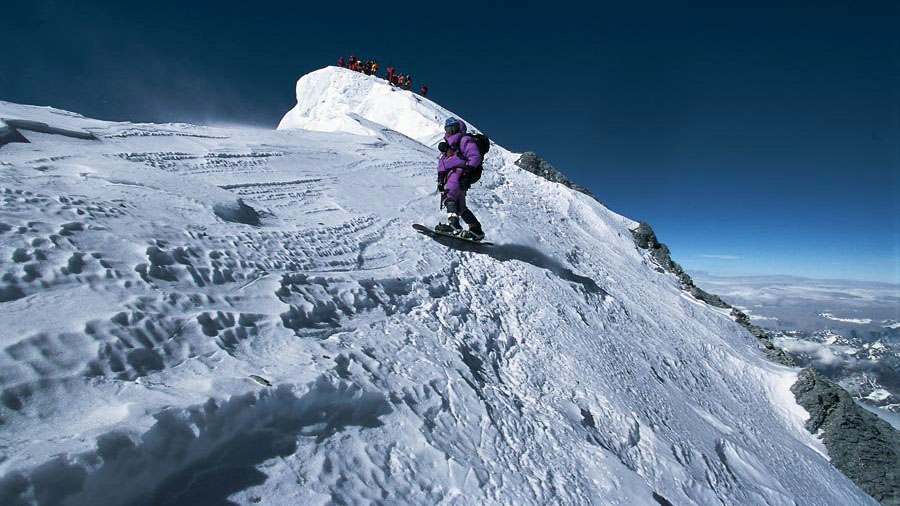
Most people would call it a day after this accomplishment. But Marco wasn’t satisfied. The next summer he made plans to return to Everest in the fall and attempt the Horbein Couloir.
*
For Marco’s second, Everest attempt he did not have a sponsor. He raised the 45,000 Euros (about $47,000) needed for the trip himself.
*
On August 22, 2002, Marco and his crew arrive at base camp and their gear is loaded on their backs for the trip to ABC.
The next day the crew sees that 30 centimeters of fresh snow had fallen overnight. While Marco looks at the North Face, which has been ripped clean, exposing the rock below, he describes the face as, “a festival of avalanches.”
Over the next few days the sherpas begin fixing ropes and carrying gear to Camp 1, approaching the “Death Zone” of 8,000 meters. Even at this place (6,000 meters) Marco is experiencing frequent headaches. Simples tasks such as tying boots, eating, and sleeping become struggles.
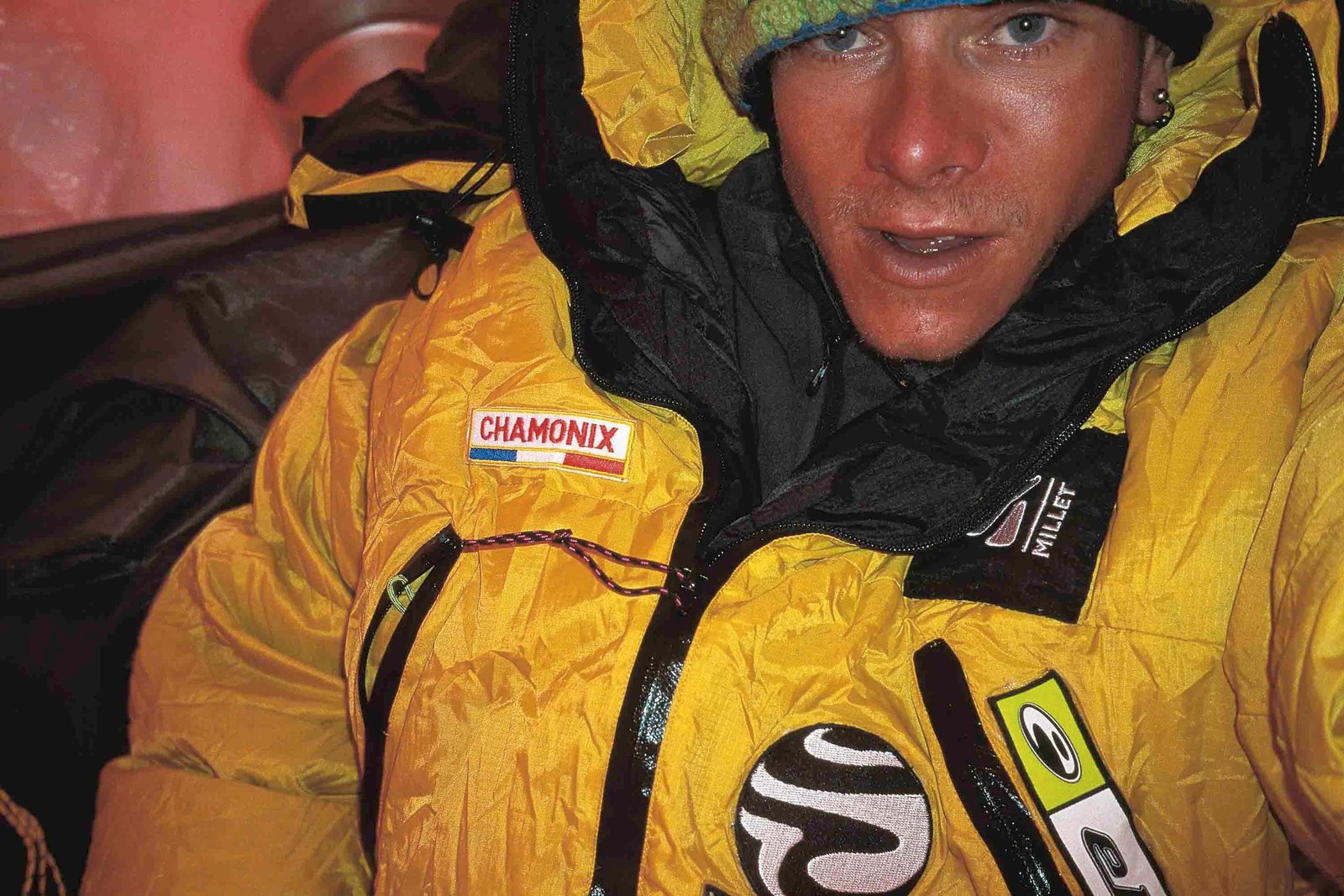
Due to storms and bad weather, the crew ascends and descends with fits and starts. But their meteorologist (Yann) informs them that Sunday, September 8, should be clear. Sunday will be the summit day. Marco records himself on camera saying, “The hardest is yet to come, little man. Don’t be too happy just yet.”
On Friday the push towards the summit begins. At one point Marco stands outside in his shirtsleeves and makes calls to his loved ones. He fills his friends in on his true progress, but tells his parents that he’s still at base camp: so they don’t worry.
On Saturday they make their way to Camp 3, officially entering the Death Zone. Here the human body can no longer regenerate. Marco calls Yann for the forecast. Yann tells Marco not to stay too late on Sunday because the wind will kick up in the late afternoon. “You won’t have many chances,” Yann says.
“Okay,” Marco replies. “Adieu, Yann.”
“Yeah, we’ll talk tomorrow, Marco. Call me when you’re down.”
“Yes, but adieu, Yann. Adieu.”
In French, there are two ways to say goodbye. Au Revoir is the typical “goodbye” between friends when you expect to see them again. Adieu is used only when the person never expects to see the person again. Yann is scared and nervous after Marco’s call. Soon after, Marco’s phone battery dies.
On Sunday, summit day, the crew has left Camp 3 by 1:30pm. They begin breaking trail through chest deep snow. At 2:10pm, after 12.5 hours in the Death Zone, the team reaches 8,848 meters (29,028 feet), the highest point on Earth, the summit of Chomolungma (“the abode of the gods”), the Mother Goddess, Mount Everest. The ascent took 3x longer than Marco’s first Everest ascent in 2001.
At the summit, Phurba Sherpa is the first to arrive.
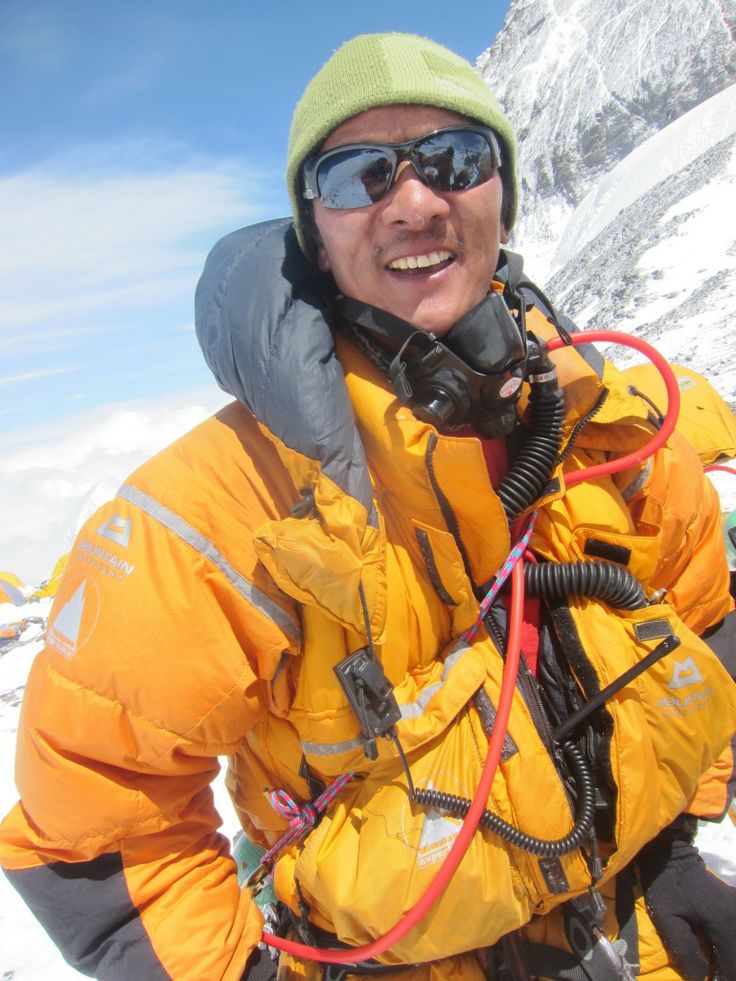
When Marco arrives, Phurba greets him with, “Where are we?”
“At the summit, but tired,” replies Marco. Phurba does a dance.
“Summit! Summit!” he yells.
“Tired. Tired,” Marco says. “Too much snow. Too much climbing.”
The clouds have begun to build from below. The sherpas are worried about the conditions and the late hour. They try to convince Marco not to go. But he’s worked 1.5 years for this. No, he’s worked his whole life for this. This chance may not come around again. At 3pm, Marco replaces his empty bottle of oxygen with a fresh one and straps in. “Take care, Marco,” says Phurba.
“Okay, Phurba. See you tomorrow.”
Marco drops and snowboards away. At 3:15pm, the sherpas watch Marco disappear down the mountain.
Marco Siffredi was never seen again. His body was never found.
*
Did Marco die dancing in one of those “festival of avalanches,” like his brother and best friend? Did he fall down a bergschrund (mountain crevice)? Did he collapse from fatigue and freeze to death (what his friends believe)? Nobody knows. And we’ll likely never find out.
What I like to think about, though, is Marco standing on the summit of Mount Everest for the second time, moments before plummeting into oblivion. Utterly exhausted, muscles twitching, burning, gasping for oxygen, the freezing winds biting through his jacket, his body rapidly breaking down, 23 years of recklessness and defiance behind him…and like Jake Burton Carpenter on a snurfer, or Dimitrije Milovich on a cafeteria tray, or any other self-centered, entitled, goofy idiot that has come before and will come after…stepping on to that wooden plank, staring down at a treacherous descent, risking a broken bone or death, and through the simple art of carving a slope never feeling more alive.
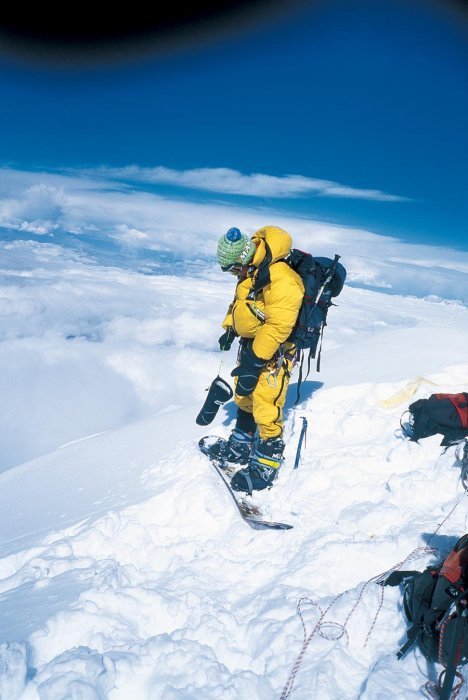
Subscribe here:
Sources:
http://news.nationalgeographic.com/news/2002/09/0927_020927_siffredi_2.html
https://www.adventure-journal.com/2013/04/historical-badass-snowboarder-marco-siffredi/
http://snowboarding.transworld.net/photos/the-disappearance-of-marco-siffredi/#O1clCe7A0fwIo0vh.97
http://www.everestnews.com/sb.htm
http://pistehors.com/news/ski/comments/in-the-footsteps-of-an-angel/

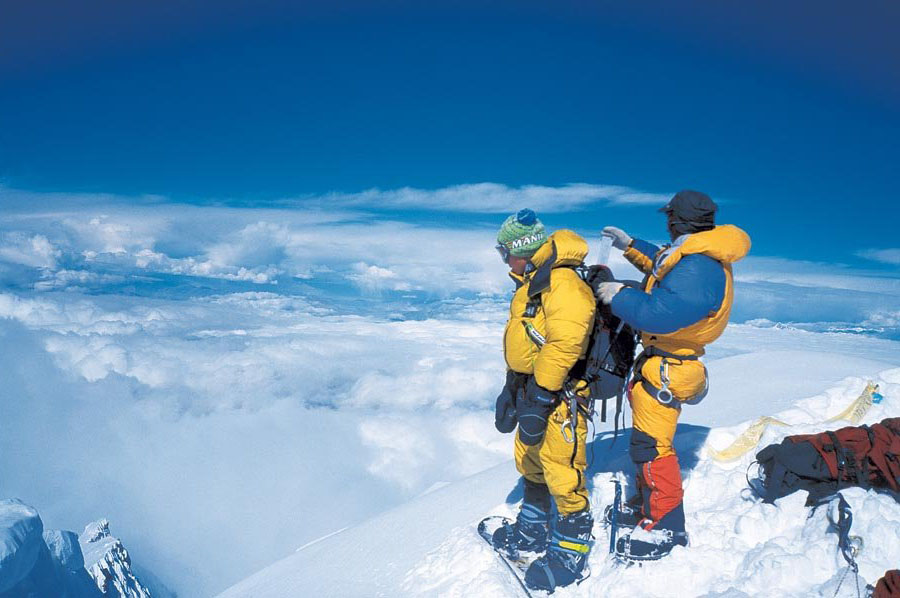

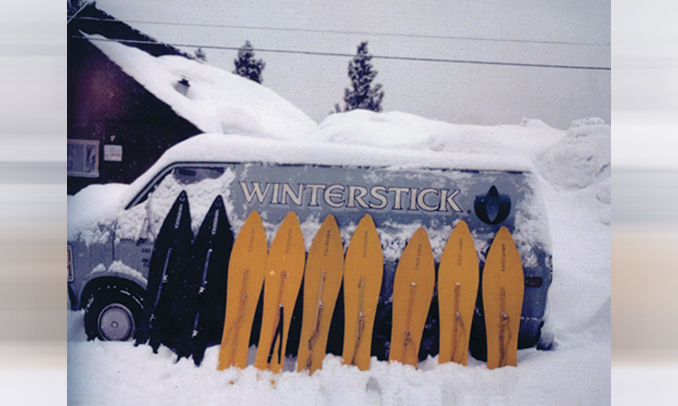


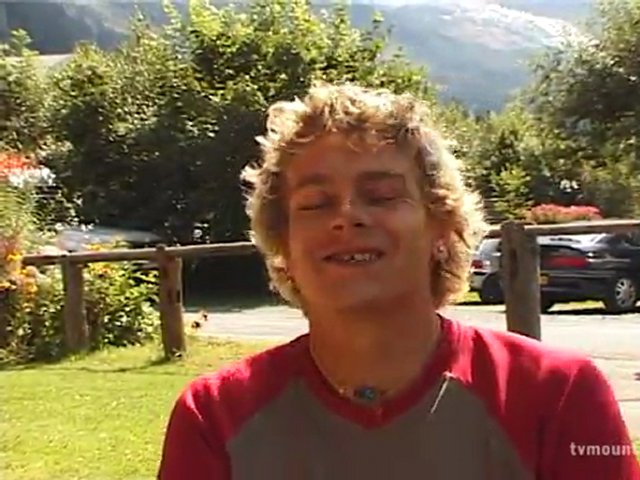
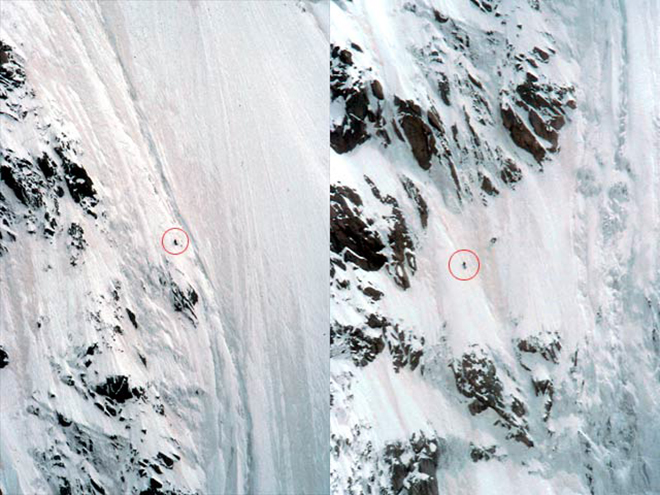
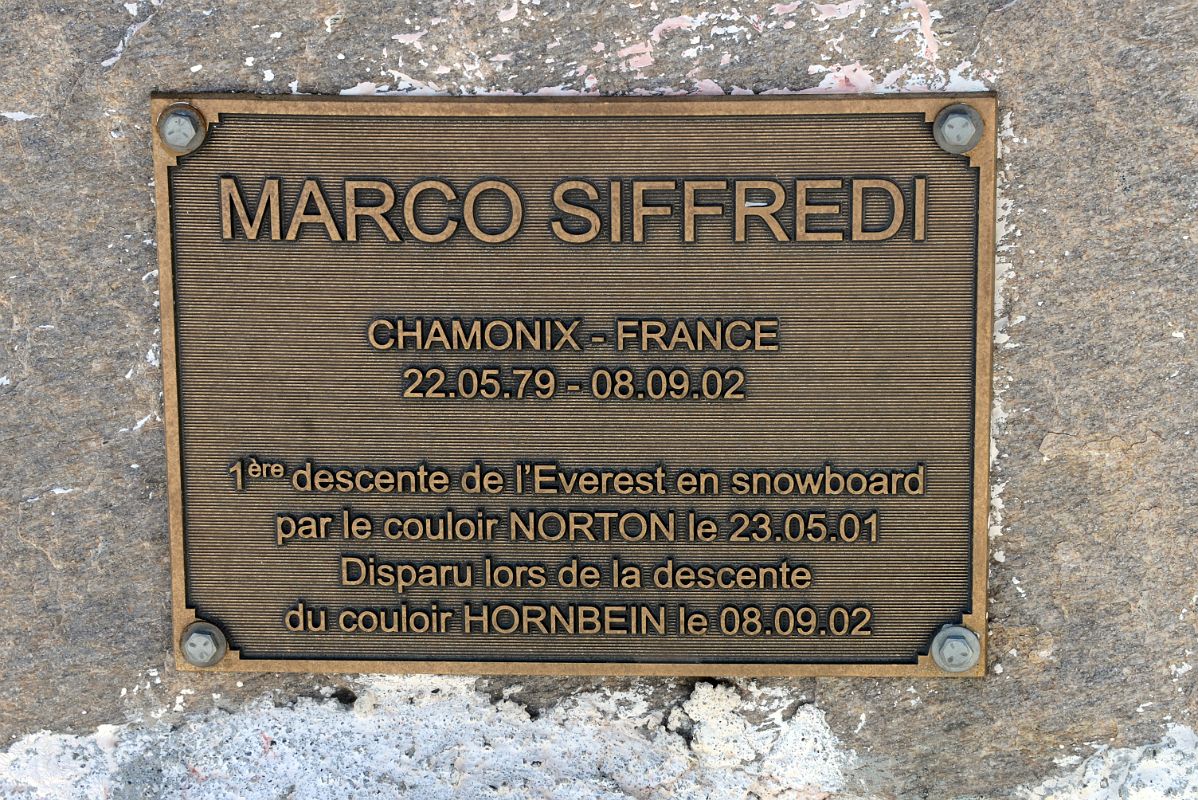
“Are snowboarders entitled, goofy, self-centered idiots or epic, artistic, purpose-driven heroes?”
WTF – ARTISTIC!!!! how the %^&* can a sport be defined as being artistic!!!!! where is the artistry in snowboarding?? if snowboarding can be defined as artistic then just about anything can be defined as such, perhaps Rugby could be defined as creative!!! as someone who is artistic, ie I paint and draw actual pictures straight from my imagination I find this bastardisation of what can be defined as artistic offensive.
As for marco himself, I don’t feel one tiny shred of sympathy marco “Darwin Award” siffredi, snowboarding is one thing, snowboarding down a dangerous mountain is another but snowboarding down Everest is asking for death!!!!, he knew the risks or he was too recklessly stupid to heed warnings or put his own safety first just so he could say he was the first to snowboard down the Horbein Couloir. He did everything possible to die that day & through his stupid selfishness he left behind grieving family & friends.
Who gives I flying *&^% if he snowboarded off a cliff or collapsed due to exhaustion, i’ll save my sympathy for the people who actually deserve some, refugees from war zones, the homeless, starving kids in 3rd world countries.
marco deserves nothing!!!!!!!
You’re a self important, melodramatic moron. I’m not going to post my “art resume” here or my wife’s for creds, but only because it would be 10 times longer than anything I care to wirte to you.
If you cannot see the artistic part of each rider’s style and personal choices of techniques and tricks for fluidity and beauty, you have absolutely no room to lament the bastardization or what is “artistic” or not. And here’s the shocker, art CAN, actually, be anything. Thought a genius like you would’ve figured it out by now but I guess you assumed like a naive, over-the-hill hipster, that art was too safe to mingle with athleticism, which you probably never bothered to apply any creative thought to.
I bet what you do is really interesting.
haha hey moron anon for the negativity. u r just another one of billions of souls to have come and gone on planet earth. no one will ever remember u or talk about you.
But guys like alexander/bolt/phelps aaaaand for snowboarders….marco siffredi will be talked about for the 1000 of years to come
Marco was too cool for school. Punching out like that at such a young age on the highest stage in the world – a showman to the end!